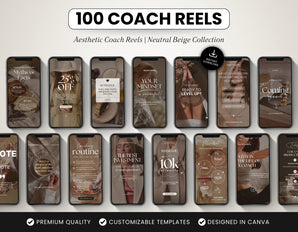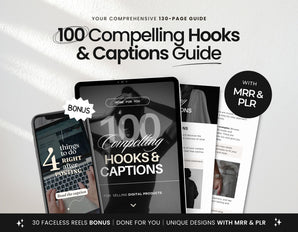A strong content marketing strategy can help you develop a following, build authority and position yourself as an expert in your industry.
As a marketer, you need to understand that content marketing is not a one-size-fits-all strategy. You have to be adaptable, and able to respond to customer needs, interests, and feedback. This means you have to know what strategies and tactics are working, and which ones aren’t. In other words, you need to know how to identify the most successful content marketing strategies for your business.
The world of content marketing is changing every day. So we’re constantly tweaking our strategies to ensure that we’re keeping up with what’s working and what’s not. Here are 10 content marketing strategies that really work:
1. Content is King

If there’s one thing that’s been a constant in business marketing over the last decade, it’s that content drives results. It’s the foundation of all customer-facing platforms, including SEO, PPC, and social media. So if you want to increase your conversion rates and boost your website traffic, you need to be generating lots of quality, well-written content.
Content creation and promotion is the backbone of any successful strategy and it’s no surprise that B2C marketers are turning to it in record numbers.
However, content marketing isn’t something that can be accomplished overnight. A content marketing plan is a long-term endeavor that requires time and effort. This is why it’s important to have a plan in place to effectively manage the resources you need to invest in content creation.
The trick is figuring out where to start. To get started, here are 3 tips to help you create content and develop a content marketing plan:
1. Start smallThis is a big mistake most new content marketers make: They think they need to start with huge content marketing projects before they start to see any results. It’s a great idea, but it's simply not realistic for most people.
Start small instead. Do a few pieces of content every week. It might be a simple blog post, or a TikTok video. Whatever it is, you need to put a little effort in. It can’t take you two weeks to write a blog post or a whole day to film a TikTok video.
It’s also important to remember that starting with a content marketing project is not something you do once and forget about. It takes a lot of ongoing maintenance and nurturing. Don’t just throw a bunch of posts at the wall and expect it to stick.
2. Write for peopleIf you want to increase your conversion rates and boost your website traffic, you need to be generating lots of quality, well-written content. That’s exactly what content marketing can do for your business.
One of the best content marketing strategies is to find a way to connect your company’s mission and vision to the everyday lives of your customers. If you’re a plumbing company, you probably don’t write an eCommerce blog on how you got your first plumber job. Instead, you write blogs on topics that your audience can relate to, like tips and tricks for DIY plumbing, or videos about the latest plumbing trends.
3. Find a topic and write about itYou know that you want to do content marketing, but you don’t know what to write about. You might think that you should write about the most popular topics on your industry, or that you need to write about something controversial to get noticed.
But that’s the wrong approach. Instead, look for a topic that is relevant to your target audience and write about that topic. This can mean a lot of things. You could write a blog about the benefits of your product, for example. Or you could write a listicle or an infographics. You could write about your company culture, or you could write about your industry.
There are endless possibilities. The key is finding a topic that is interesting and useful to your followers.
2. Create great content, but also think about distribution

You don't need to spend hundreds of dollars to hire a full-time content producer. Instead, try to think about content marketing as an extension of your regular content creation and distribution. There are many places where content can come from, so long as it is well-written and properly distributed.
The goal of content marketing is to share valuable information and engage with readers. Some of the best ways to achieve this are by sharing original content and using marketing as an avenue for conversation and advocacy.
To make sure the content you create is shared, you must focus on both being authentic and engaging enough. In the long run, you want your content to spread naturally via social media and word of mouth. You also want to produce content that people want to share and engage with.
Think about your audience, and what they would find valuable in your brand. Then write about it. Think about what your target market needs, and how you can help.
You can use blogs, articles, social media posts, videos, infographics, podcasts, and eBooks to spread your message.
What basic guidelines to follow when creating and distributing content
- You need to make posts or videos the viewer can relate to.
- Use short, snappy titles. A well written headline will definitely bring more website visitors.
- Make sure to have a clear topic when writing.
- Provide value to your readers, and you'll be rewarded.
- Be consistent. The best content marketers have a plan for what they'll produce, and stick to it.
- Measure. Once you have something to measure, you can adjust to reach your goal.
- Include a call-to-action at the end of every blog or social media post.
- Don't forget to keep your content fresh.
- Share your content. If you produce it, you should share it.
- Don't forget about the people who aren't looking at your social media posts or articles. Think about how you could grab their attention.
3. Test, test, test

A large chunk of testing revolves around testing ideas in an attempt to find what content performs the best. There are a variety of ways to do this.
You can do A/B testing on your ad campaigns and test different copy, creatives or audiences.
You can also use A/B testing to determine which pages within your site drive the best conversions. Then, you can split test variations of the same page and see which version converts best, or test the call to actions (CTAs) to see which gets the most clicks.
Another aspect of testing involves the kind of content you're producing and whether or not the public is clicking on your various types of content.
One of the things you should consider when creating content is how many viewers are clicking versus skimming or reading the content. For example, a lot of articles and blog posts are written in a fairly technical manner, which means you could be losing a lot of potential readers to a very dry piece of writing. This is where testing your content for a more conversational tone, or even a more visually interesting approach, can help get the message across better.
It's easy to say "make content more fun" but it takes a bit of skill and creativity to make it happen.
What do you need to test?
- Length – How long should a post be? Does your followers read a longer post or are they just skimming for key points?
- Audience – How does your market react to a piece of content? Are they engaging with comments or are they simply sharing it on social media?
- Title – Do titles have an impact on whether a post is shared or leads to more interactions?
- Format – How does your viewers respond to different types of content? Is it better to write blog articles, make carousel posts on Instagram or Pinterest Pins?
- Language – How is the language of the piece received by your public?
- Images – Should images be included in your content? If so, what kind of images?
- Links – How many links are in your content? Do they send people somewhere?
Analyzing your data allows you to identify areas in which you can improve your marketing strategy. As you begin to analyze your content marketing campaigns, ask yourself questions such as:
- Have your content marketing efforts been successful? How can you tell?
- How can you increase the effectiveness of your content marketing efforts?
- Which content is performing well? How can you re-do it but make it better?
- Which content has the lowest ROI? Why? What do you need to avoid?
4. Start with a plan, then iterate

For many companies, “content marketing” is an afterthought; a term that’s used interchangeably with “social media” or “digital marketing.” And, sadly, that’s the attitude a lot of business owners take when planning out a marketing strategy. They figure, “If I can spend $1,000 on marketing materials, ads, and other promotional products, that should be enough to give me a leg up on my competition.”
In a nutshell, this approach leads to content marketing strategies that don’t resonate with your audience, and ultimately fails to generate results.
But it doesn’t have to be that way. Content marketing can be a powerful way to differentiate your business, generate buzz, and drive customers to your website. Here’s a list of content marketing strategies that really work.
1. Create a clear content marketing plan.You want your content marketing to be a coherent whole, not a collection of unrelated tactics.
Before you begin, write down everything you think you need to do. How many pieces of content do you plan to produce? What platforms will you use? Who will be responsible for each piece? Once you’ve completed your plan, make a note of any questions you may have and start searching for answers.
As a last step, write a marketing strategy document that clearly outlines your goals, objectives, budget, and plan.
2. Use content for lead generation.One of the best things about content marketing is the ability to use the medium to generate new leads for your business.
Consider a recent study from MarketingSherpa, which found that 60% of marketers view content marketing as their number one lead generation tactic. But when asked what content sources generate the most leads, the top three responses were:
- Blogging (44%)
- Social Media (34%)
- Direct Mail (23%)
So if you want to take your content marketing to the next level, consider adding content to your lead gen tactics. This way you will be able to develop a brand image and appear more in search results.
3. Produce content that answers the questions your customers haveThe best content always answers the questions of the people it’s trying to reach.
So when you’re producing content, ask yourself:
* What question am I answering?
* Who is this content meant for?
* Where does it fit within the buyer’s journey?
The key is to understand your market’s needs, pain points, and buying preferences. With this information, you can get more sales and better brand awareness.
4. Build an editorial calendar.An editorial calendar is a simple tool that helps you stay organized and stay on track. You can use it to plan any type of content, from blog posts, TikTok videos to email newsletters.
The best thing about a calendar is that it can be used for a variety of content, from short blogs and infographics to long-form content, like eBooks, video guides, and reports.
In addition to the standard features of a content calendar, you’ll want to keep in mind that your editorial calendar should align with your marketing calendar, which means you’ll have an idea of what your content should look like before you publish.
5. Make your audience a part of the process

Most of your marketing efforts should revolve around user-generated content. While this is a great way to increase engagement, there are many other things that you can do. Let’s take a look at a few of the top strategies that are working today.
Ask for inputHave you ever wondered why some companies are able to generate such high amounts of organic traffic? While a lot of it comes from search engine optimization, a lot of companies aren’t always as savvy as they could be. Don’t be afraid to reach out to your social media followers and ask them what they would like to see in your videos or posts. Ask for feedback, get their opinion, and see what they come back with. This feedback is gold to your writing process. No need to search and source new ideas, you can use their input for your next post or email newsletter.
Invite influencers to contributeDo you have a community of experts or thought leaders that you would love to have write content for your blog or social media pages? Reach out to them, and ask if they would be interested in contributing. Not only is this a great way to get great content written for you, but it gives those influencers a sense of ownership. They will feel more invested in your brand when they know they’re helping it grow and they are not just a regular user.
Create a community of interestIf you’re building a community, you need to make sure you’re providing valuable content to your members and users. You need to keep your customers and followers constantly engaged with your brand. This can be done by providing important information or resources to your online community. In order to convert a follower to a returning customer, you need to offer something more, not only your products and general information.
A community is build with high quality content, and a business with a strong online community will always come first in search results. You need to remember that not only your website is found online, your social media pages also show when people search for your brand. You can get more sales from the community itself or with the help of the number of followers you have. Your brand's online presence can influence your sales conversion rate and it can help your other advertising efforts.
Be consistentIf you want to see your content go viral, it needs to be consistent. You need to develop content that people will enjoy and that they will look forward to seeing each week, month, and year. Moreover, it should guide them towards making a purchase or inquire about your services.
Creating content that’s useful to your public is the best strategy for attracting more followers, keeping them engaged, and ultimately generating email subscribers and sales. A customer might not purchase right after you post, however, he now knows how to search and find your website. A sale might happen after a few weeks or even a few months. The key is to keep creating content and educating your future customers. By simply making them subscribe to your email newsletter now, you can more effectively guide them towards a purchase in the future.
6. Offer freebies to encourage sharing

You may think that offering a discount or a freebie for sharing content online is just about price, but it’s actually a lot more than that. These offers can actually grow your followers list and boost your engagement numbers. For example, if a company offers a $10 credit for your first purchase of a particular product, they might see more sales from customers who are interested in the product.
These companies will see more engagement if they post on social media about the freebie. After all, people don’t want to share something they don’t like.
In case you want to offer a freebie, I put together a short list with ways to offer a freebie in order to increase social shares and email subscribers:
- Give away a sample size of a product you're trying to sell.
- Offer a free trial of your product or service.
- Use a giveaway to drive awareness and traffic to your social pages.
- Offer a freebie (like an ebook) via email, after the user has subscribed to your newsletter.
- Offer something of value (like an educational course).
- Develop a resource for users (ex. guides, pre-made lists, ready-made templates, stock files etc.)
- Give a gift card (or other prize) for using your platform.
Offering something for free will likely lead to more social shares and subscribers to your email list.
7. Have multiple channels to reach your prospects

Use all the channels possible for your business. Don’t limit yourself to one type of content. Be flexible, and allow yourself to evolve as your business evolves. You want to have your products visible on all social media platforms and in the search engines.
In addition to your blog, you should also consider creating a presence on social media through other platforms, such as Facebook groups, Instagram, LinkedIn, and even TikTok. In this way, your social media strategy doesn’t have to be confined to one channel. Instead, you can spread your messages to a larger public.
Your strategy should consider which networks your prospect is active on, and plan your content accordingly.
Your brand's social media channels need to be engaging, informative, and tailored to your public. For example, if your followers are interested in dog training, they might follow a Facebook group about dog training. On Twitter, you can target the users who follow specific hashtags or keywords. On TikTok, you can make short videos with tips on how to train your dog.
You can produce your own content on your site and social media or purchase it from a third party provider. Whatever you do, don’t forget to think about your audience. Don’t use words or phrases that are too obscure, and don’t post things that aren’t relevant to your business or don't follow your brand guidelines.
Keep track of your social media statistics. This way, you can measure and improve your performance which can lead ultimately to an increase in sales.
8. Provide relevant content that solves problems

There’s no point to content marketing if no one sees your content. That’s why success involves providing valuable information and solving real problems.
Content marketing provides businesses with the tools and platforms to develop relevant and engaging content that people are interested in. The content can be done in-house or outsourced, and can be used as a standalone tool or part of a larger marketing strategy.
To maximize the effectiveness of content marketing, you must have a strategy for each channel you use. If you are using it as a standalone, then it is essential that you define what the content should be and who it is intended for.
Here are ten content marketing strategies that really work:- Create original content and promote it.
- Re-purpose content to target different groups.
- Get others to write about your brand.
- Work with influencers to better advertise your brand.
- Find topics that matter to your followers.
- Leverage new channels and devices.
- Measure content impact.
- Develop an integrated marketing program.
- Use customer testimonials.
- Find ways to add value.
9. Make it visual

Create visually engaging content and scroll-stopping ads. The creatives of your posts and the videos need to be visually appealing to your target market. These visuals include text, images, and videos. In addition to making things interesting, your creative should communicate a message that is simple and easy to understand.
Content marketing strategies may vary depending on your business type. However, most of us agree that content marketing has emerged as the primary means of reaching target prospects. And this is the main reason why it’s so important to produce high quality content, with the objective of growing your followers and ultimately leading to greater sales conversions.
Your content marketing strategy needs to provide clear benefits. In order to get people to click, like, share, or subscribe.
To help you craft content that grabs attention and resonates, consider these strategies:
Include relevant data and statistics in your posts and ads. The data can come in the form of social media metrics, like the number of likes and followers, as well as metrics on the engagement rate of your posts.
Consider how your product and service fits into the larger picture. For example, if you are a digital marketing agency, consider how your brand would be unique and compelling compared to your competitors.
Think about what your target customers care about. If you are in the healthcare industry, maybe your content is about a specific disease or treatment option. Or perhaps your target market is moms. If you’re in the real estate industry, perhaps you’re creating content that focuses on helping homeowners find a home to fit their needs. You can explain why your service would benefit them and why searching for another agent is not needed.
Include a clear call-to-action (CTA). What do you want your reader to do? Do you want them to watch a video? Subscribe to your newsletter? Click on an ad? You’ll need to communicate the benefit of each CTA.
10. Use testimonials to promote trust

People want to know that their experiences are real, and they’re interested in hearing from others who have had the same experiences.
There’s a reason that testimonials are so often used in online advertising. They’re a great way to connect with potential customers and establish trust and credibility. Testimonials are particularly effective on social media platforms like Facebook, Instagram and Twitter, where people are more likely to be receptive. Reviews on Google can also build more credibilty on search engines for your brand.
Here’s a quick checklist of strategies to consider when using testimonials in your content:
- Make sure your testimonial includes more than a few words from the person speaking.
- Use short, punchy sentences that are easy to read and understand.
- Ask for permission first.
- You don’t need to include a full body shot. Just a headshot is sufficient.
- You can always add a short bio about the customer to explain their role in the testimonial.
- Use a variety of testimonials.
- Keep your messaging consistent.
In conclusion, to succeed, you must commit to being constantly creative and producing high-quality content regularly, the key is quality and quantity. It’s not enough to have good ideas. You have to work hard to bring those ideas to life and make them tangible. Content marketing is a marathon, not a sprint. This means you should avoid the temptation to be reactive. You need to keep a steady pace, with regular content produced, and make sure that it’s consistent. Only by doing this you will be able to bring more traffic to your website and sell more products or provide your services to more people.
















